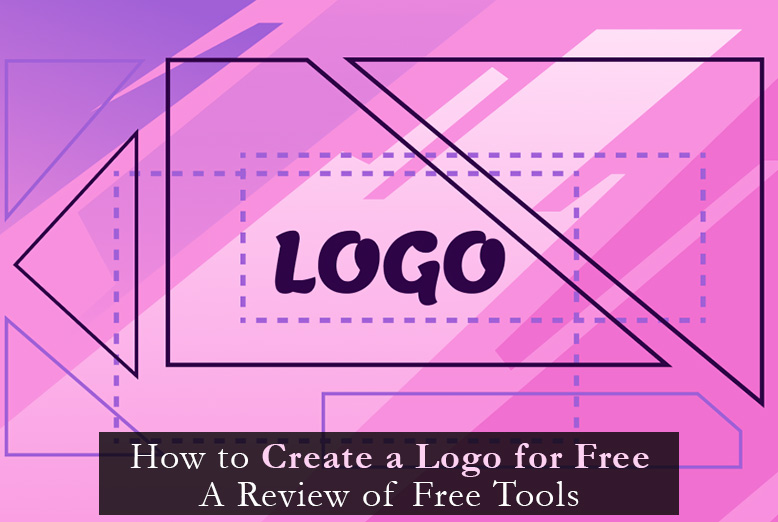Creating a logo is one of the most essential steps in building a brand. A well-designed logo is not just a visual symbol; it’s the face of your brand that communicates your identity and values at a glance. Whether you’re launching a startup, refreshing your brand, or simply need a professional logo for a personal project, the good news is that you don’t need to break the bank to get one. In this article, we’ll guide you through the process of creating a logo for free, ensuring that it looks professional and reflects your brand’s essence.
Why a Logo Is Crucial for Your Brand
Before diving into the “how,” let’s first understand the “why.” A logo is often the first thing people see when they encounter your brand. It’s a visual shorthand for what you stand for and what people can expect from you. Think of iconic logos like the Nike swoosh or the Apple symbol—they’re instantly recognizable and evoke certain feelings and associations.
A well-crafted logo can make your brand memorable, distinguish you from competitors, and foster customer loyalty. On the other hand, a poorly designed logo can confuse your audience, diminish your brand’s credibility, and even drive potential customers away.
This article was prepared by the experts at Turbologo, a company dedicated to helping businesses create impactful and memorable logos without the need for expensive design software or professional graphic designers.
What Makes a Good Logo? Key Design Principles
A successful logo is more than just a pretty image; it adheres to key design principles that ensure it resonates with your audience. Simplicity is paramount—a cluttered or overly complex logo can be hard to recognize and remember. Versatility is also critical; your logo should look good in various sizes and on different media, from business cards to billboards.
Another important principle is relevance. Your logo should align with your brand’s identity and the industry you operate in. For example, a playful and colorful logo might be perfect for a children’s toy company but inappropriate for a law firm.
Timelessness is another crucial aspect. Trends come and go, but your logo should remain effective and relevant for years to come. Finally, your logo must be memorable. A distinctive and unique design will stick in people’s minds, making your brand easier to recall.
Benefits of Creating Your Own Logo
Creating your own logo can be incredibly rewarding. Not only do you get to take control of the creative process, but you also save money that might otherwise be spent on hiring a designer. Moreover, the proliferation of free design tools has made it easier than ever to create a logo that looks professional, even if you have no prior design experience.
Why Turbologo is the Perfect Tool for Your Logo Creation
When it comes to creating a logo without breaking the bank, finding the right tool is essential. That’s where a free logo maker like Turbologo comes in. Turbologo is designed to be user-friendly, making it accessible even for those with no prior design experience. With its intuitive interface, you can easily navigate through various customization options, from choosing the right color palette to selecting the perfect font.
What sets Turbologo apart is its extensive library of design elements and templates, allowing you to create a professional logo that truly reflects your brand. Whether you want something modern and minimalistic or bold and vibrant, Turbologo provides the flexibility to tailor your logo to your exact needs. Plus, the tool offers a quick and straightforward way to download your logo in high resolution, ensuring it looks great across all your branding materials. With Turbologo, creating a standout logo is not just easy—it’s free.
Steps to Creating a Logo: From Concept to Completion
Creating a logo is a process that requires careful thought and planning. Here’s a step-by-step guide to help you navigate this journey.
- Start with Research: Before you begin sketching ideas, it’s essential to understand your brand, your target audience, and your competitors. What do you want your logo to communicate? What colors, shapes, and styles are common in your industry? Answering these questions will provide a solid foundation for your design.
- Brainstorm and Sketch: Start by brainstorming ideas. Don’t worry about being perfect at this stage—just get your ideas on paper. Sketch different concepts, experiment with shapes and text, and see what resonates with you.
- Choose Your Colors and Fonts Wisely: Color and typography play a significant role in how your logo is perceived. Choose colors that evoke the emotions you want your brand to be associated with. Similarly, select fonts that match the tone of your brand—be it modern, traditional, playful, or serious.
- Use a Free Logo Design Tool: Once you have a clear idea of what you want, it’s time to bring your design to life. Numerous free tools are available online that allow you to create a logo using templates and customizable elements. These tools are user-friendly and provide a range of options to tailor the logo to your brand’s needs.
- Refine and Revise: After creating an initial version of your logo, take some time to refine it. Ask for feedback from friends, colleagues, or even potential customers. This input can be invaluable in making final adjustments and ensuring your logo is effective.
- Finalize and Download: Once you’re satisfied with your logo, finalize the design and download it in the necessary formats. Ensure you have versions suitable for both print and digital use.
Choosing the Right Colors and Fonts: Conveying Your Brand’s Mood
Color and typography are more than just aesthetic choices—they are powerful tools for conveying your brand’s personality. Different colors evoke different emotions: blue often suggests trust and professionalism, red can imply passion or urgency, while green is commonly associated with growth and nature.
When selecting a font, consider the tone of your brand. A sleek, sans-serif font might work well for a tech startup, while a classic serif font could be more appropriate for a financial institution. The key is to choose colors and fonts that align with the message you want your logo to communicate.
Tips for Creating a Unique and Memorable Logo
To ensure your logo stands out, focus on originality. Avoid clichés and overused design elements. Instead, strive for a design that is unique to your brand. Simplicity is also crucial—a logo should be easily recognizable and not overly complicated.
Consider incorporating a symbolic element that represents your brand’s core values or mission. This could be an abstract shape, a custom icon, or a stylized letter. The goal is to create a logo that not only looks good but also tells a story.
Common Mistakes to Avoid When Designing Your Logo
While creating your own logo can be exciting, there are some common pitfalls to be aware of. Overcomplicating the design is a frequent mistake. Remember, your logo needs to be versatile and recognizable at a glance, so simplicity is key.
Another mistake is choosing colors and fonts that don’t align with your brand’s identity. For example, using bright, playful colors for a corporate law firm could send the wrong message to potential clients.
Finally, neglecting to test your logo in different sizes and formats can lead to problems down the line. Your logo should be legible and visually appealing whether it’s on a small business card or a large billboard.
How to Get Feedback and Perfect Your Logo
Feedback is a crucial part of the design process. After you’ve created a draft of your logo, share it with others and ask for their honest opinions. You can use social media, online forums, or simply ask friends and colleagues for their thoughts. Pay attention to common themes in the feedback—if multiple people suggest the same improvement, it’s worth considering.
Iterate on your design based on the feedback, and don’t be afraid to go back to the drawing board if necessary. The goal is to refine your logo until it perfectly represents your brand.
Conclusion: Are You Ready to Create Your Logo?
Creating a logo for free is more achievable than ever, thanks to the abundance of online tools available. By following the steps outlined in this article, you can design a logo that’s professional, memorable, and truly reflective of your brand. Remember, a well-designed logo is an investment in your brand’s future—it’s worth taking the time to get it right. So, are you ready to create your logo? Dive in, get creative, and watch your brand come to life with a logo that stands out.
Also Read: LOGOS India Secures Two Logistics Parks




















